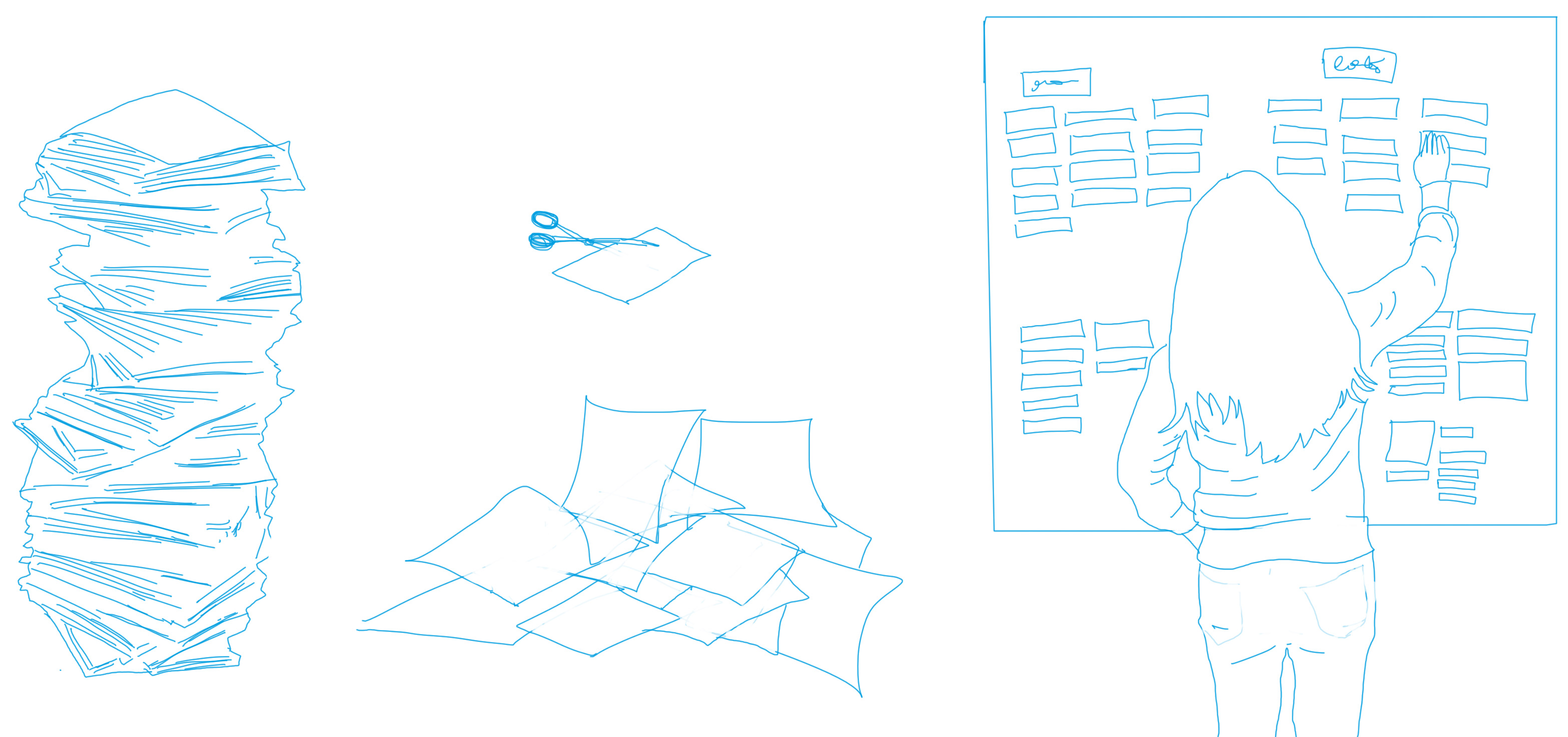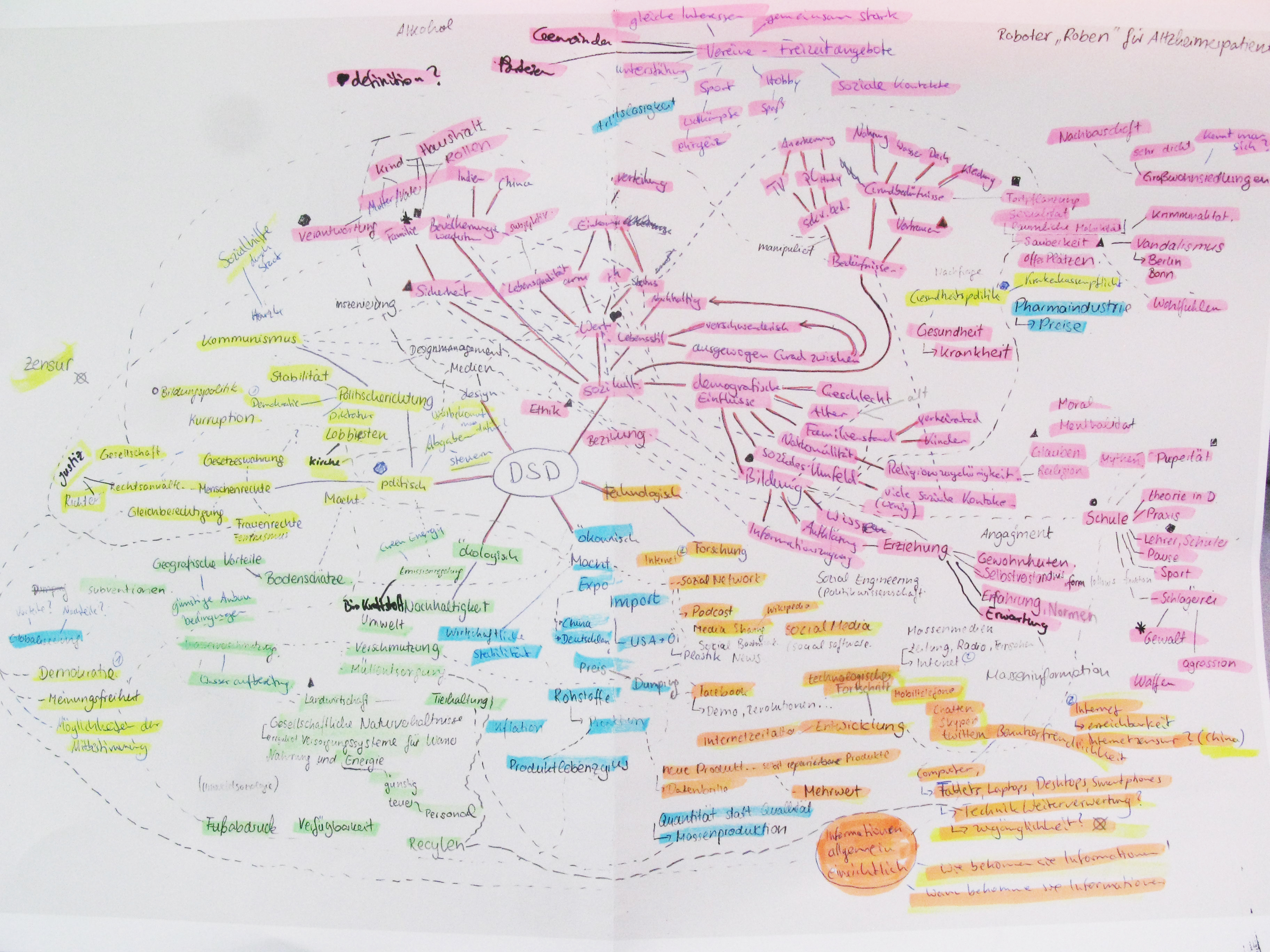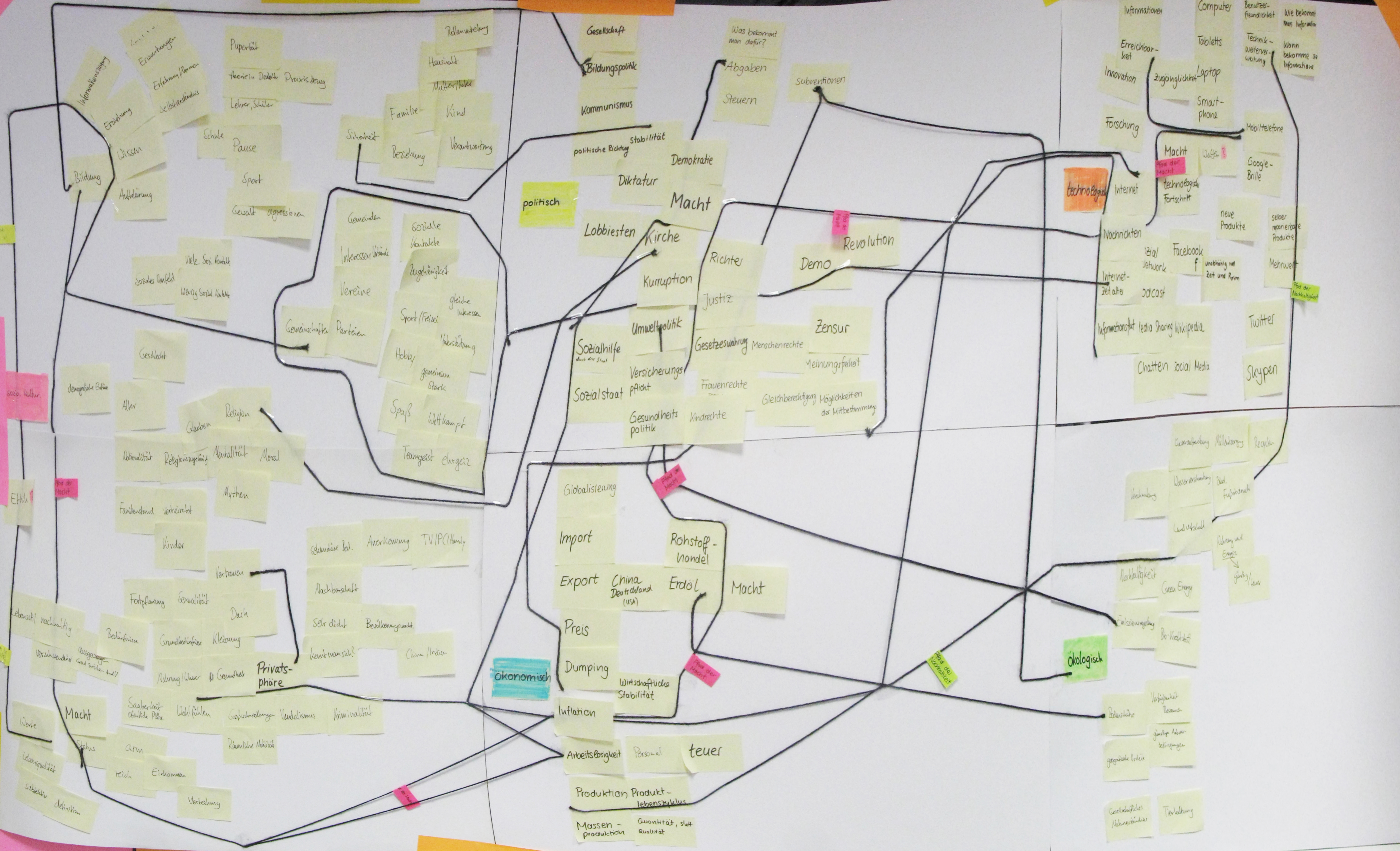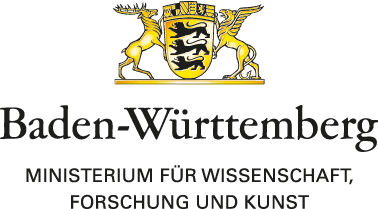Introduction
This project has been done as part of the Student Research Teams (SRT) at the HfG Schwäbisch Gmünd. The SRT was an interdisciplinary design program with the goal of exploring research through and with design. We were forced to pick an area of interest by ourselves. We picked the „Digital Social Design“ space with Timo Bäcker as an external mentor and industry expert. At this time he was working as an information architect (until 2014) at the digital agency denkwerk. The project was done in collaboration with my fellow student Narges Mohammad.
The SRT aimed at exploring research methods as part of the design process to profitfrom the best of the two areas of design and science. Our task was to independently develop the research question for an identifiable problem in the digital social design space. In order to come up with a suitable question for this project we did a mindmapping session and a STEEP analysis.
The problem and research question we focused on was settled in the „Sharing Economy“ and was mainly concerned with „collaborative consumption“.

Source: Botsman Rachel (2013): What’s mine is yours
The term „collaborative consumption“ captures the idea of sharing, the collaborative consumption of goods, skills, time and money. The most the most frequently used example to illustrate this idea is, is the drill. Do you own a drill by yourself or know someone owning one? We think you do, or at least you know some people who do. Did you know that a drill is used only about 14 minutes upon the span of a lifetime? This is not very efficient from an ecological viewpoint. „You want the hole in the wall and not the drill“ So why not share a drill with others?
The Problem
Lending one of your objects to a complete stranger? What must have seemed impossible ten years ago has turned into a realistic scenario. “Technology nowadays is able to build trust between strangers.“ Before Ebay most people couldn’t imagine to send money to a stranger’s bank account beforehand. At least since the rise of social networks like Facebook and Twitter, sharing in the real world is only the next step. Still those services are a niche. Because of this we asked ourselves the question:
»Which needs are crucial to the decision to use a „peer-to-peer neighborhood sharing“* services?«
* This term describes the lending and borrowing of products between privat persons in a neighborhood.
Our Research Design
We did research on studies which enabled us to identify four user groups we wanted to work with. The researched sociodemographic characteristics of those user groups helped us to identify people who matched those criteria we were looking for. The recordings of the interviews were then transcribed, printed and clustered into categories of similar answers. We tried to find suitable user needs as a description for each category. This unorganized categorization we had created on the wall was later revised in excel. The structure of the revised categorization was executed in otder to support the outcome of mental models. Aligned with our research and the development of two mental models, we defined defined two personas in order to get a more concrete picture of the people behind the abstract mental models. Both personas and mental models are developed to help service providers to generate insights in a problem they are currently working on.

Qualitative guided interviews
The transcripts were cut out and clustered in a mapping on a wall. The clustering, we copied them into a table in excel. The copied answers were broken down to their central statement and afterwards grouped together with similar statements. This groups of statements were then again grouped and categorized under broader terms. The outcome of this analysis were two mental model diagrams of refusing and potential users of peer-to-peer neighborhood sharing systems.

Insights
Four user groups were identified and defined: active users, former users, potential users and refusing user. We were able to interview four potential and four refusing users. Unfortunately, did not get the chance to interview former and active users of peer-to-peer neighborhood sharing services. We found that there is a high need to offer security for potential users. Furthermore, our research shows that refusing users share different fears preventing them from using sharing services.
Supportive Methods
With the methods of the mental model and the personas, we offer service providers of peer-to-peer neighborhood sharing a set of tools to align their service with the needs of potential costumers. By using our methods they can identify problems and come up with solutions to improve their service. This is reached by analyzing and breaking their overall service off into smaller elements. Afterwards, this elements have to be organized under the suitable towers of needs right under the horizontal line in the mental models. The goal is to identify towers which have low or no suitable elements of the service they are aligned with. It is then recommended to try to find solutions for this neglected user need. The provided personas are a helpful method to get a clearer picture of the users and find solutions matching their needs. There is a high chance to improve a any service by using both, mental models and personas.
Personas
As one of the supportive methods we developed personas. Waltraud Weber, one of the two personas we developed for our project. She functions as a representation of the refusing user group. Detailed illustrations and a short comic strip illustrates her environment and her behavior.

Illustrations of the persona Waltraud Weber
The detailed description of the character provides a visual and extensive insight into the needs of this user group this user group. This enables the service provider to adapt his service to those needs.
You will find the in detail description of both personas in our project documentation (in German). You can download the documentation here:
Mental Models

Mental Models are visual diagrams which enabling third persons to work with our interview outcome. By the use of this method, any service can be analyzed. A service provider is able to take on the perspective of potential users by using this models. Those insights help to identify and solve problems concerning the needs of the users.
You can download the Mental Model of refusing users as a printable PDF.
You can download the Mental Model of potential users as a printable PDF.
Appendix
Here are the slides of the presentation we held at the end of the project.
Methods learned in this project:
- Scientific writing
- Developing research questions based on empirical social research
- Creativity methods
- STEEP Analysis, Cluster Mapping
- Guided interviews
- Observation
- Planning and evaluating usability testings






